AMD’s 5 GHz Turbo CPU in Retail: The FX-9590 and ASRock 990FX Extreme9 Review
by Ian Cutress on August 9, 2014 8:00 AM ESTASRock 990FX Extreme9 BIOS
For those that have followed our Z87 and Z97 BIOS coverage, the ASRock BIOS for the 990FX Extreme9 falls very much on the side of Z87, which makes sense as the platform will probably not be seeing many updates, if any, for the foreseeable future. The main screen uses white text on a starry background, with the selected option very clearly defined.
In this main screen we have details of the motherboard name, the BIOS version, the CPU installed, the CPU Speed, the DRAM installed, the per-module density and the current speed of each module. Other information that would be good to have includes the main system voltages, temperatures and fan speeds. Note that ASRock has not yet implemented a system that contains this information across every BIOS screen, unlike some of their competition. On this screen is also an ‘Active Page on Entry’, useful for overclockers that want the BIOS to skip straight into the OC Tweaker menu.
The OC Tweaker menu, as the name suggests, has the overclocking options. ASRock like to add in some automatic overclock options, and here we get the choice from a 5% to a 50% overclock:
Typically the higher overclocks would be outlined in red to indicate an extreme overclock, but ASRock does not do that here. The rest of the OC Tweaker menu has the CPU configuration settings, DRAM Timing options and Voltage configuration. Load Line Calibration is a single option in the voltage section, and the DRAM Timing Control is a separate menu item for memory sub-timings:
The Advanced tab contains options for enabling/disabling controllers, adjusting SATA modes and implementing some power saving features. The Tool menu next is where ASRock has their more interesting features, such as System Browser that gives an overview of the motherboard and tells the user what is installed:
The Online Management Guard feature displays a timetable for the week and allows the user to disable the network features. One of the major purposes of this feature is for adults to restrict their children’s use of the internet at odd hours of the day.
The Dehumidifier function keeps fans enabled after the system has switched off in order to equilibrate the temperature inside the case with the temperature outside the case. In the event of warm, moist air in the case that cools in the evening, in humid climates this may cause condensation, hence this feature. There are also menu options to save user profiles within the BIOS underneath this setting.
The Fan Controls are how ASRock used to do them, in terms of ‘levels’, with the higher the level indicating how quickly the CPU fan power would ramp up. Some of the headers have the option of tying the fan power to the CPU temperature, meaning that if the CPU temperature rises above a value, the fan is placed on full speed until the target temperature is reached.
The BIOS finishes up with boot options and security. One missing feature from ASRock BIOSes is a boot override feature, allowing for a one-time boot from within the BIOS.
ASRock 990FX Extreme9 Software
The software for the Extreme9 is centered around the ASRock Extreme Tuning Utility, or AXTU for short. AXTU used to be the main interface, until A-Tuning came about for Intel’s 8-series motherboards, but due to the age of the motherboard (or perhaps incompatibilities) this software has not been upgraded.
The screen that pops up first with AXTU is the Hardware Monitor interface. This shows the CPU speeds, base frequencies and multipliers, as well as the fan speeds, temperatures and voltages. Two key bits of information missing are the CPU installed and the motherboard which is being used.
AXTU also is part of the fan control:
The fan controls here are similar to that in the BIOS, relying in the ‘level’ system to determine the gradient at which the fan speed is ramped up. Users can select a target temperature which will put the fan at full speed when the CPU is above the target.
The overclocking interface offers several simple options, although no automatic overclocking setups. Here we can adjust the base frequencies, the multipliers and the voltages, although nothing along the lines of load-line calibration.
AXTU also provides an interface to save the BIOS and some power saving features, but also XFast RAM. This feature allows the user to partition off some of the memory into a RAMDisk, and AXTU will also manage some caching options in order to speed up some of the operating system functions.
While ASRock has dropped XFast USB with the latest Intel 9-series motherboards, the software is here on the Extreme9 and implements newer USB protocols to increase peak transfer speeds at the expense of latency. In our copy tests, the XFast feature does provide a tangible benefit, although the feature is limited to one USB device at a time.
XFast LAN is a licensed and skinned version of cFos, which allows for software manipulation of network priority.



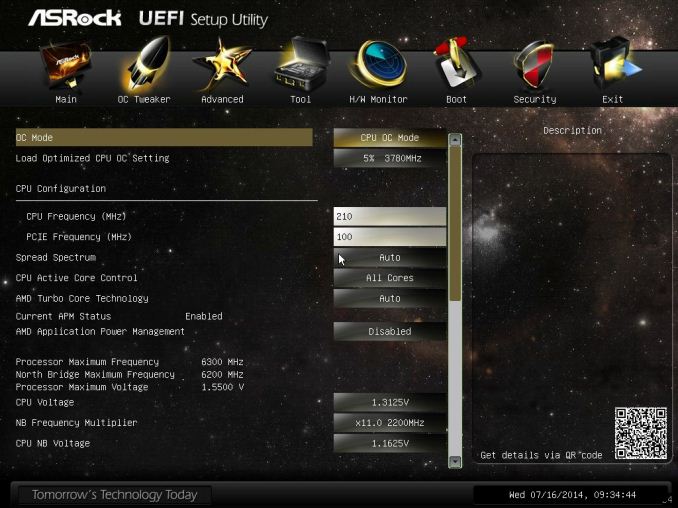
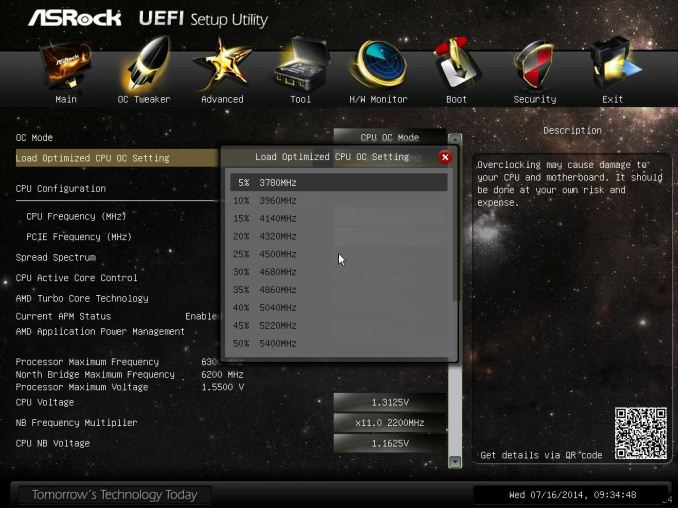
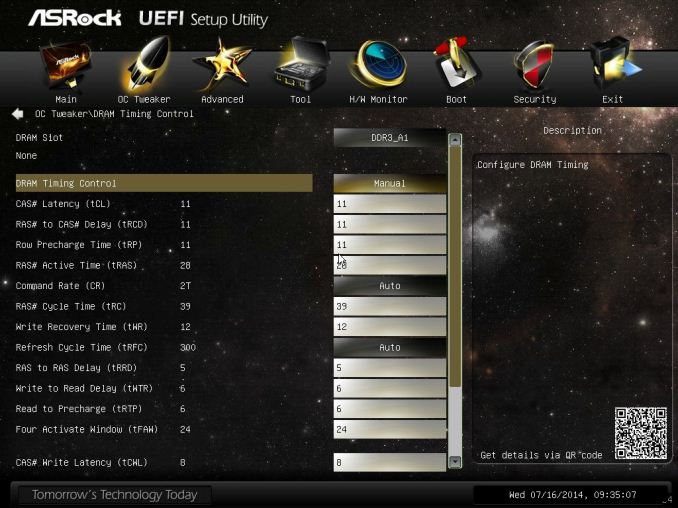

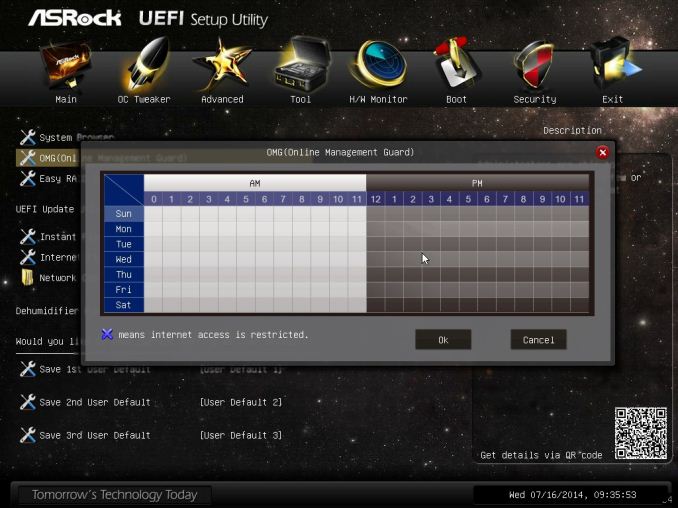

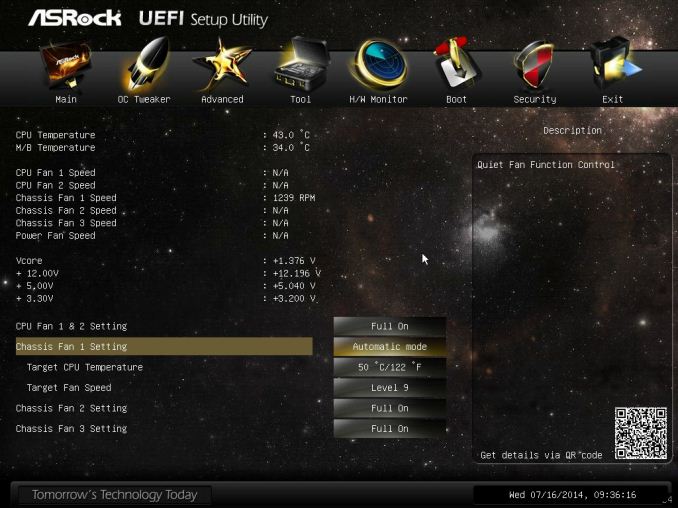







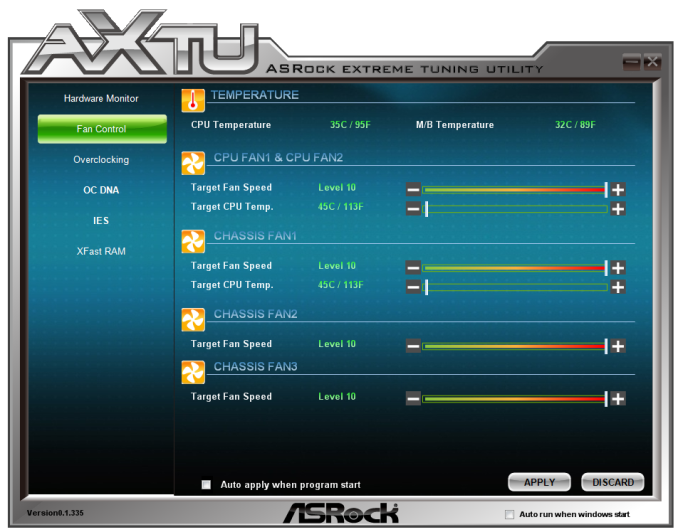
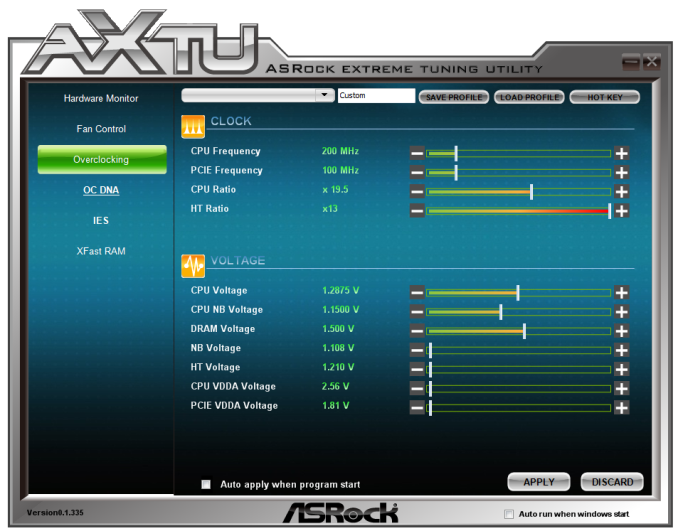

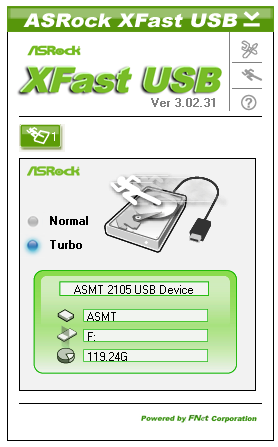
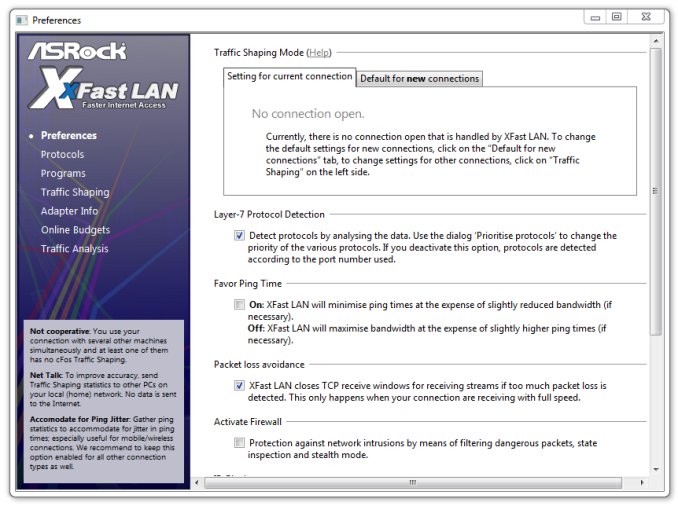














146 Comments
View All Comments
Flunk - Saturday, August 9, 2014 - link
The likelyhood of an existing AM3+ owner having a board that can support a 250watt CPU is pretty low, there really aren't many options. This CPU is a real turkey and people are not buying them.TiGr1982 - Saturday, August 9, 2014 - link
220 W, not 250, but this does not change your statement :)basroil - Sunday, August 10, 2014 - link
220W TDP, the chart above shows it uses 237W without overclocking! AMD needs to get their stuff togethertakeship - Sunday, August 10, 2014 - link
Yeah, AMD's "220" is 220w of heat, not necessary 220w of power. You'll measure more, maybe a lot more, at the wall.Death666Angel - Sunday, August 10, 2014 - link
That is the whole system, the mainboard, the drives, dedicated graphics card, conversion loss by your PSU. Get your facts straight.@takeship: Where would that 220W of heat come from is not from the power? Does the CPU somehow produce more heat from chemical reactions?
anubis44 - Sunday, August 10, 2014 - link
Well, one pro is that you get a processor that is fairly comparable to an Intel i7 in performance, and most importantly, you'll be giving your money to a company that didn't try to screw you by attempting to corner the market through extortionate threats to their own OEM customers if they used AMD CPUs when they were better than Intel's.In other words, there may not be any technical advantages over Intel's competing products, but there are also no significant disadvantages, and at least by buying AMD, you won't feel like you need to take a bath afterwards to wash the filth off. I say to hell with Intel. Stop giving them money as punishment for their gangsterism.
asoltesz - Wednesday, August 13, 2014 - link
Mostly, this is why I bought an AMD desktop last year. It was similar in price than an Intel-one would have been for the same money. It consumes much more energy but that was something I could put up with.FITCamaro - Saturday, August 9, 2014 - link
Man I seriously don't want to live in England if your electricity is that expensive. That's $0.30 cents/kWh. But with our current president and administration who want our electricity prices to rise, we might soon be in that boat. I pay about $0.06/kWh.lkb - Saturday, August 9, 2014 - link
Here in germany we pay 54 Euro Cents/kWh during peak times. While it sucks it has it upsides too - no stupid bitcoin mining crazy to speak of around here!TiGr1982 - Saturday, August 9, 2014 - link
Well, then I doubt you will go with FX - even despite the fact, that FX CPU dies are actually produced in Germany at Drezden GloFo Fab 1 :)